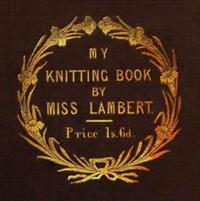|
|
Read this ebook for free! No credit card needed, absolutely nothing to pay.Words: 51042 in 21 pages
This is an ebook sharing website. You can read the uploaded ebooks for free here. No credit cards needed, nothing to pay. If you want to own a digital copy of the ebook, or want to read offline with your favorite ebook-reader, then you can choose to buy and download the ebook.

: From Xylographs to Lead Molds; A.D. 1440-A.D. 1921 by Forster H C - Printing History; Electrotyping@FreeBooksWed 07 Jun, 2023 FROM XYLOGRAPHS TO LEAD MOLDS AD 1440 AD 1921 FOREWORD Printing has been called "the art preservative of all arts." The invention of individual movable cast-metal type, between A. D. 1440 and 1446, made printing a commercial possibility. The subsequent rapid spread of the art, in the hands of students and craftsmen, may be said to have been the centrifugal force of the Renaissance and the Revival of Learning, which age, if it can be chronologically delimited, began A. D. 1453. Printing divulged to the masses the ancient classics which had been locked up in monasteries and accessible only to clerics and the nobility. The common people began to read. Education became popularized. This brochure is a brief history of the evolution from xylographs to the methods used today for duplicating a typographical printing surface in a solid piece. INDIVIDUAL MOVABLE CAST-METAL TYPE The art of writing, and that of printing from wooden blocks, and all the subsidiary arts of illuminating, decorating and binding manuscripts and books, had long passed out of the exclusive hands of the monasteries into the hands of students and artisans, before printing with individual movable cast-metal type was invented. This epoch making invention came into practical use between A. D. 1440 and 1446. When, therefore, Johannes Koelhoff of Lubeck, Germany, printed the "Cologne Chronicle" in 1499, he used individual movable cast-metal type. Typographic printing had long before superseded Xylographic printing, that is, printing from a solid block of wood on which type of an entire page were cut individually by hand. Between the invention of individual movable cast-metal type and the perfection by the Earl of Stanhope of his printing-press, , very few improvements had been made in the mechanics of printing. Everything we know today about the art has come into use since 1799, and if Koelhoff had come to life in 1799 and been permitted to resume his occupation of printer, he would have found himself practically familiar with the mechanical equipment of his craft as used in the establishment of the Stanhope Press in that last year of the eighteenth century. Centuries before 1440 printing is believed to have been attempted in China; presumably about the beginning of the Christian era. It is said that in the year A. D. 175 the text of the Chinese classics was cut into tablets which were erected outside the national university at Peking, and that impressions--probably rubbings--were taken of them. Some of these fac-simile impressions are still in existence, it is asserted. Free books android app tbrJar TBR JAR Read Free books online gutenberg More posts by @FreeBooks
: Scenes and Adventures in Affghanistan by Taylor William - Afghan Wars; Afghanistan Description and travel@FreeBooksWed 07 Jun, 2023

: Lukkarin Mari Kynäily by Thomasson Pehr Hirvonen Simeon Translator - Fiction@FreeBooksWed 07 Jun, 2023
|
Terms of Use Stock Market News! © gutenberg.org.in2025 All Rights reserved.






